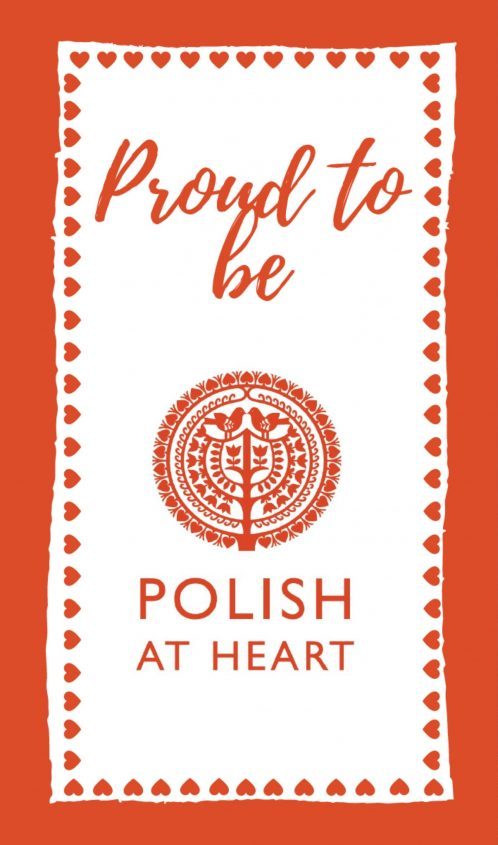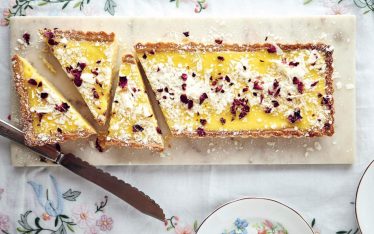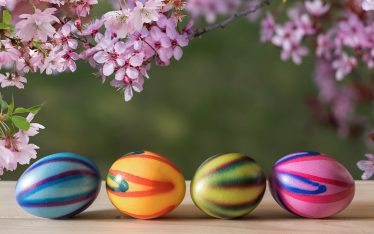With Easter approaching, Palm Sunday for Poles, is as colourful as any feast due to the “palms”- bazie or palemki made from fresh branches of willow with catkins or “kotki” (little cats) or with dried flowers. Polish Girl Scouts across the world make these, preserving the heritage for their communities and every year I’ve spent a day awash with colourful crepe paper, the strong scent of cut pussy willow and any greenery that won’t wilt. It’s a social affair full of fun and chatter but I wasn’t so aware of all the symbolism of the palemki which are sometimes larger than life.
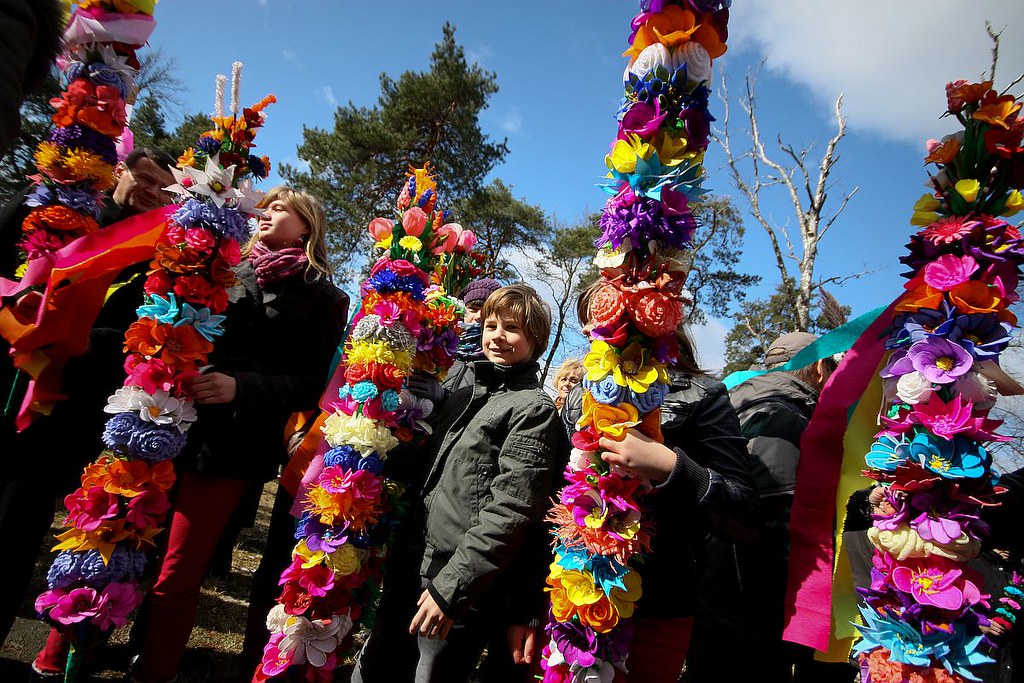
Photo: Palm Sunday, village of Łyse. Kurpie region, Poland, MFA CC BY-NC 2.0
Willows – lover of life
Known as plants which love life, for the church they are symbols of the resurrection and immortality, being one of the first to leaf in spring and even a dried branch will root quickly in water. Twigs of bilberry plant, box green, cypress and periwinkles were added for evergreen qualities together with dried or paper flowers and ribbons. Since the 4th century, starting in Jerusalem, palms are carried in processions across the world on the Sunday before Easter to commemorate the celebrity-like greeting of Christ as he entered Jerusalem before being crucified.
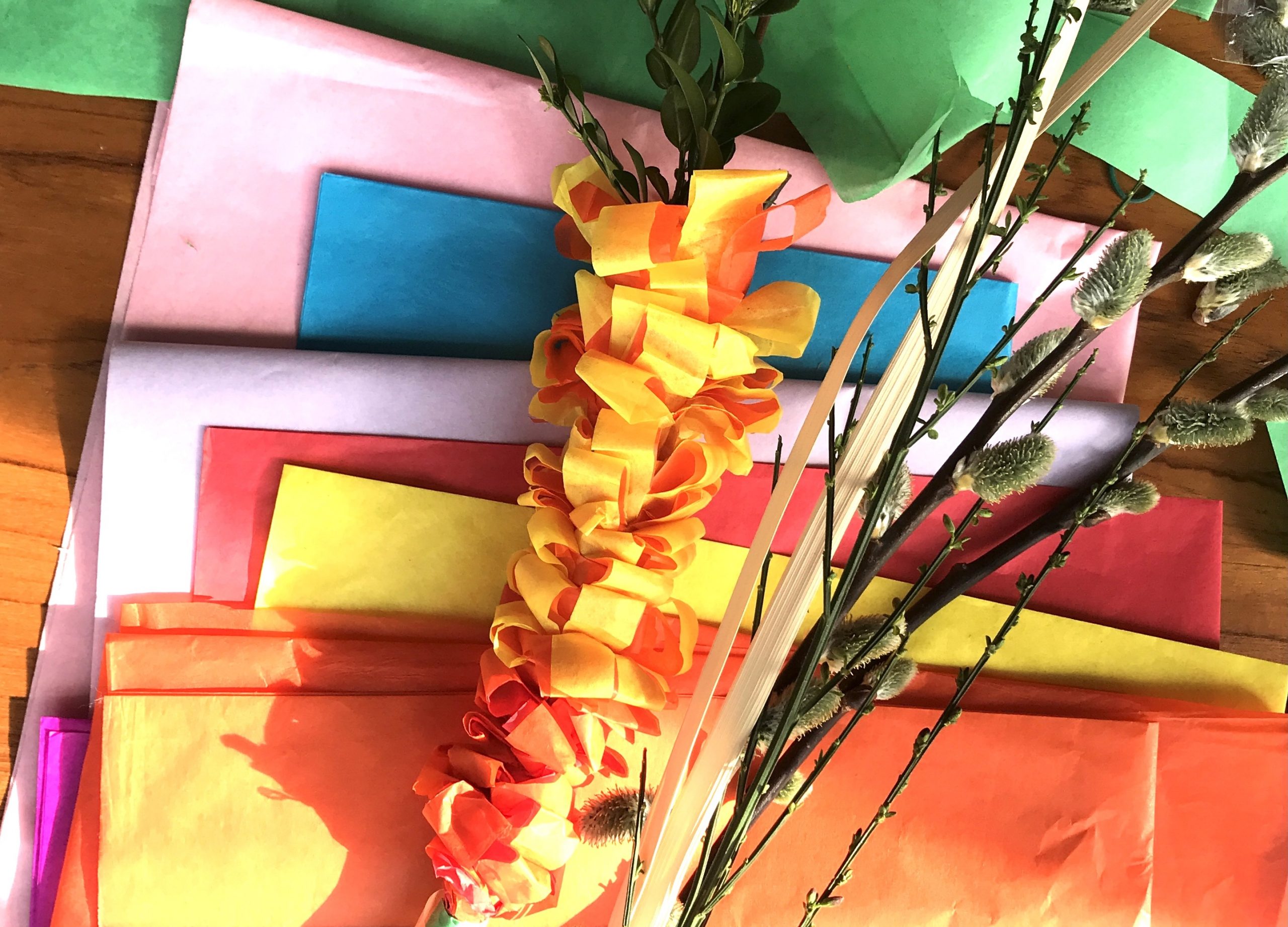
The more garish colours the better. Those made of dyed dried flowers are traditionally from the eastern regions of Poland, around Wilno (now in Lithuania), but are now sold throughout the country in Easter markets.
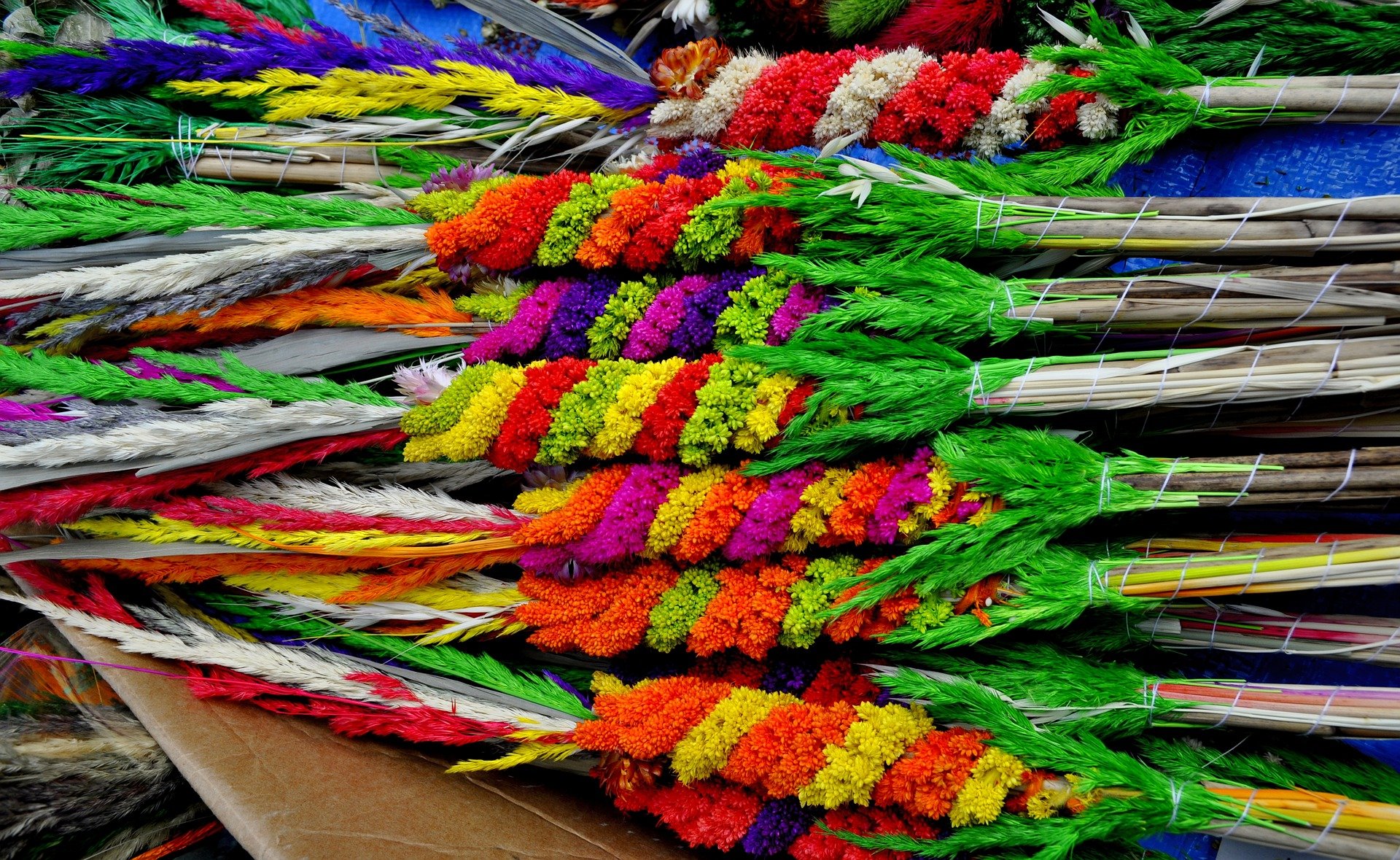
Image by Jan Jakubowski from Pixabay
Health and happiness
In Polish villages, once Palemki have been blessed in church by a priest at the Palm Sunday mass, they could be tapped against cows’ sides to ensure good milk, or against children to ensure their health. In Pomorze (the north), parts of the palm were left in ducks nests and bee hives to protect them from evil spirits. In the south the palms were used as sprinklers to bless the fields and villagers still put parts of the palm in flower beds by the house to shield from hailstorms and lightning. Not just for the animals, either, catkins were swallowed by people for preventing headaches and throat aches and are taken to this day by some, just in case. They are even ground down and added to herbal tea.
Fun and Games

Photo: Easter Palm Contest in Lipnica Murowana, MFA, CC BY-NC 2.0
In southern areas of the Karpaty mountains, in Myślenice, Wieliczka and also the Kurpie region, tall columns of flowers are made, wrapped around a hazel or fir sapling and processed through the town. The village of Lipnica Murowana in southern Poland holds the most famous palm competition, where the highest has been 33 metres. Górale, highlanders make theirs from willow trees and there are no metal components allowed.
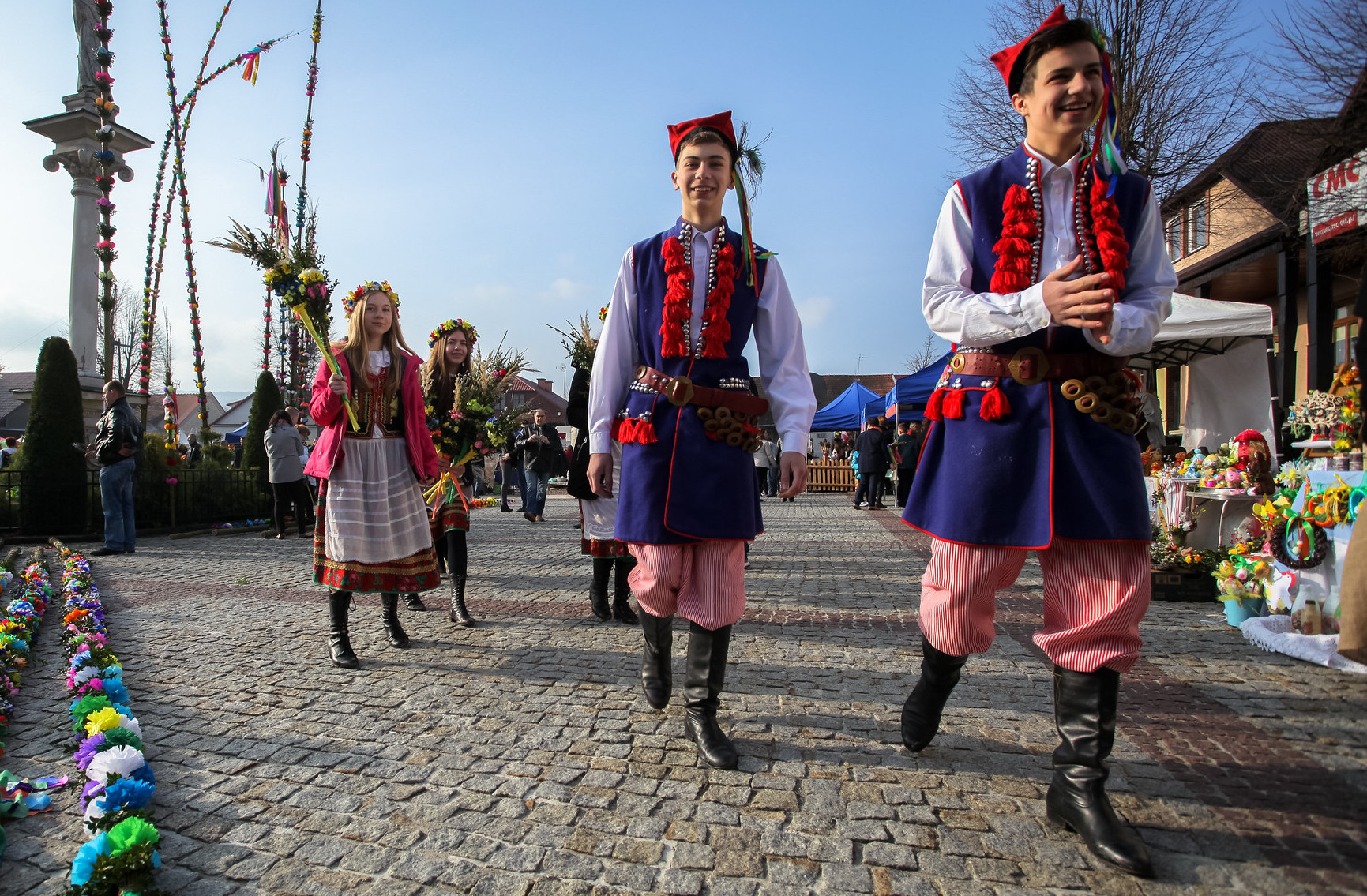
Palm Sunday competition MFA CC by 2.0
In Kraków and surrounding villages boys with faces blackened with soot, tall hats made of straw and long strands of crepe paper, reaching their waists plus staffs with paper hilts would greet churchgoers after the service and wander round reciting nonsensical rhymes for which they’d get snacks or eggs for the baskets they carried. Called puchery or pucheroki (from Latin for boy pueri) it has been revived in recent years to include girls. Aren’t they lucky! After the solemnity of Lent, this is a moment to start thinking of the joy of Easter ahead.
Keep healthy all year round
Blessed palms are revered and kept for a year until the next Easter usually tucked behind a religious picture or cross and I’ve certainly found them in my pre-Easter spring cleaning – in my family they were only allowed to be burned, so throw them in the wood burner for the last spring fire. People would also repeat the priest’s blessing with holy water on the family to keep them healthy throughout the year. So this year, if you’ve had your palm blessed, perhaps you should eat a catkin or two or ground them into tea, just for luck?
Some of this article was based on information in: Święta Polskie Tradycje i Obyczaje – Barbara Ogrodowska, Alfa 1996
If you liked this article, try a couple of others about Easter:


 1.Tracing Family History pre-WW2
1.Tracing Family History pre-WW2 2. Tracing Family History WW2
2. Tracing Family History WW2